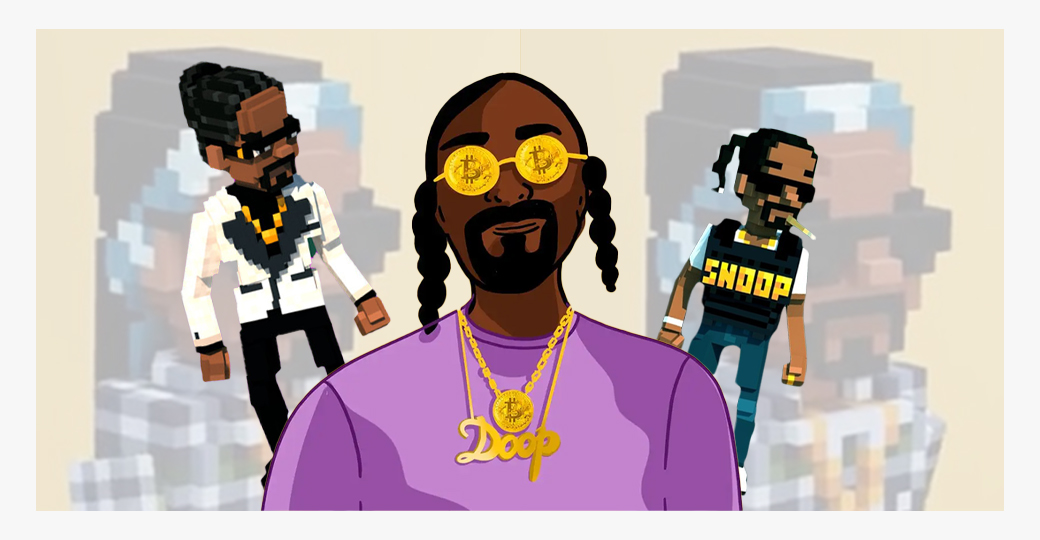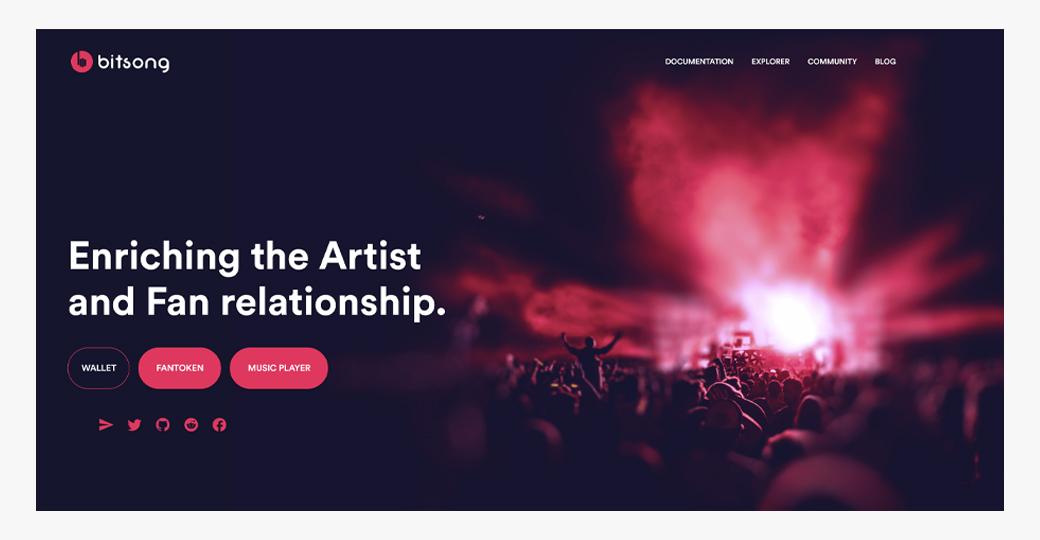
The HUGE growth of the rust developer in 2022
- Posted: 25.10.22
The number of jobs available to a Rust developer has doubled in the past two years.
This is due in part to the fact that it’s been added as a supported language for Linux – this means that more developers are starting to learn Rust and use it in their projects.
The language has a lot of features that make it appealing to developers. It’s safe, fast, and easy to learn. This makes it a great choice for new and experienced developers alike.
And as more developers use Rust, the demand for rust developers is only going to continue to rise.
The Rust language is steadily climbing the rankings on industry reports also.
None of this is a surprise to the team here at Plexus Towers. We’ve seen the growing demand for the Rust developer first-hand.
But now, even the NSA is getting in on the deal, highlighting the security of memory safe languages like Rust.
The NSA has started to use Rust in order to create more secure applications. Rust is a great choice for this because it’s a memory safe language, this means that errors in code can’t lead to security vulnerabilities.
This is a big deal for the NSA, and it’s something that more organizations are starting to take notice of. Rust is quickly becoming the go-to language for secure applications.
But what does this mean for the Rust developer salary?
Let’s break down the Rust-y phase that developers are going through in a bit more detail.
Interest in Rust remains strong, even in a down market
Total UK-based Rust developer jobs are down about 15% from the same period in 2021.
In a down market, that’s pretty good; your portfolio wishes it was only down 15%.
And in fact, overall interest in Rust remains high, given the circumstances.
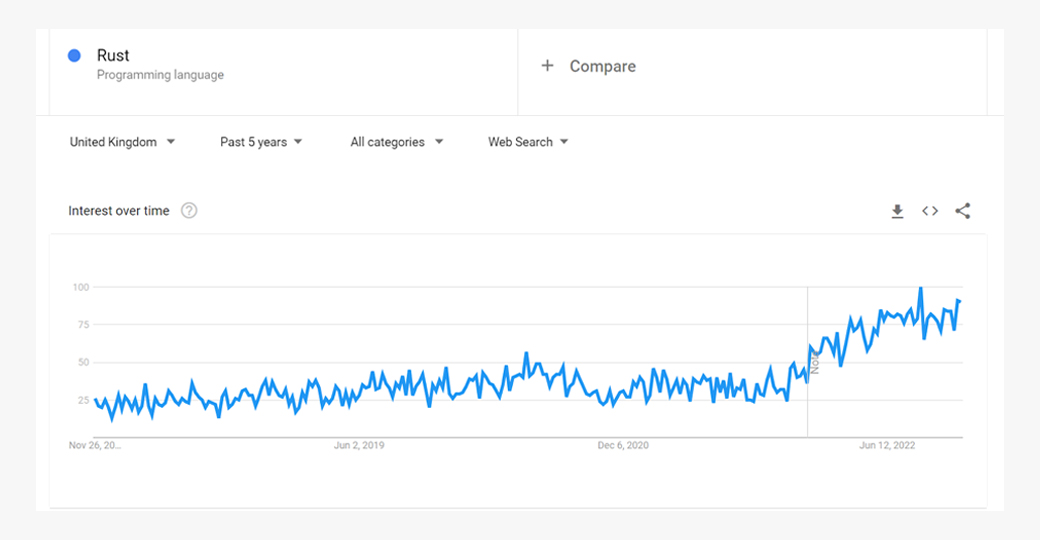
Notice that spike? There’s actually more interest in the language than there used to be.
And it’s not just random web searches; industry insider reports confirm our suspicions – Rust is gaining some steam.
Here’s a recent Slashdata report – notice how Rust is climbing the ranks.
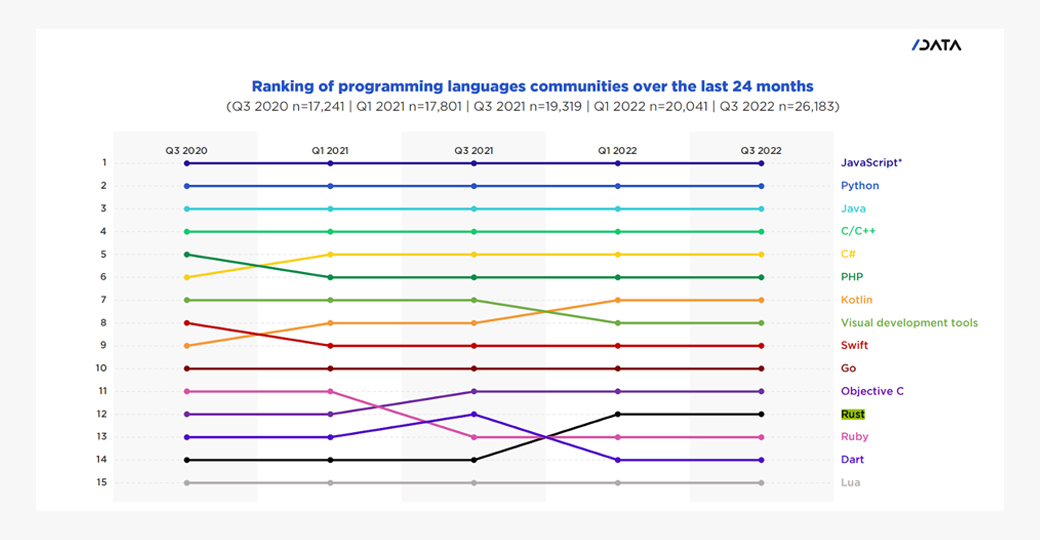
It isn’t Javascript, not by a long shot – but the size of the Rust developer community has actually tripled in the past few years, from just under a million developers to nearly three million. That puts it at the 11th-largest developer community, per Slashdata.
The Rise of Memory-Safe
Rust’s growth fits in with an increasing appreciation for many of the memory-safe languages. No less an authority than the US NSA just published a memo encouraging developers to make the switch to more secure languages like Rust.
Why the push? From the programming side, memory safe languages like Rust drastically reduce security vulnerabilities. Google’s own research, backed up by the NSA memo, concludes that a whopping 70% of potential liabilities can be traced back to software memory management problems.
That’s what the NSA’s report made clear. Highlighting common weaknesses like buffer overflows or memory allocation issues, the NSA recommended a handful of memory safe languages as replacements.
And Rust was on the list:
- Rust
- C#
- Ruby
- Go
- Swift
- Java
Not Just About Crypto
At Plexus, we’re all about Web3, crypto, and blockchain. But the growth of the Rust developer isn’t only due to web3; the language is fast and scalable, lending itself to applications like games.
Right now, there’s something like a quarter of all developers learning about or interested in blockchain and web3. But under 10% of all developers actually work in those fields.
We’re seeing the continued rise of a highly-regarded programming language, at the exact same time that a huge portion of developers show interest in entering the blockchain realm.
Combine those, and you’ve got a recipe for some serious salary growth.
And that’s exactly what we’re seeing.
More Rust, More Pay
The hard facts are simple.
Rust developer salaries rose by nearly 25% in 2022, despite all the turmoil.
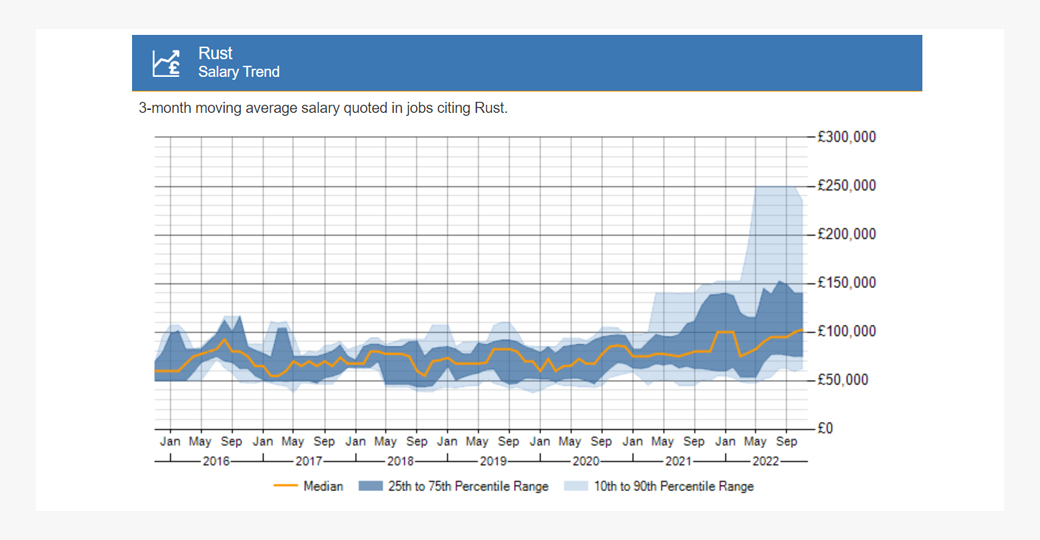
You can see the initial dip around February – followed quickly by a rebound in salaries and even growth.
Same thing shows up here – accompanied by even more significant growth on the upper end (senior devs).
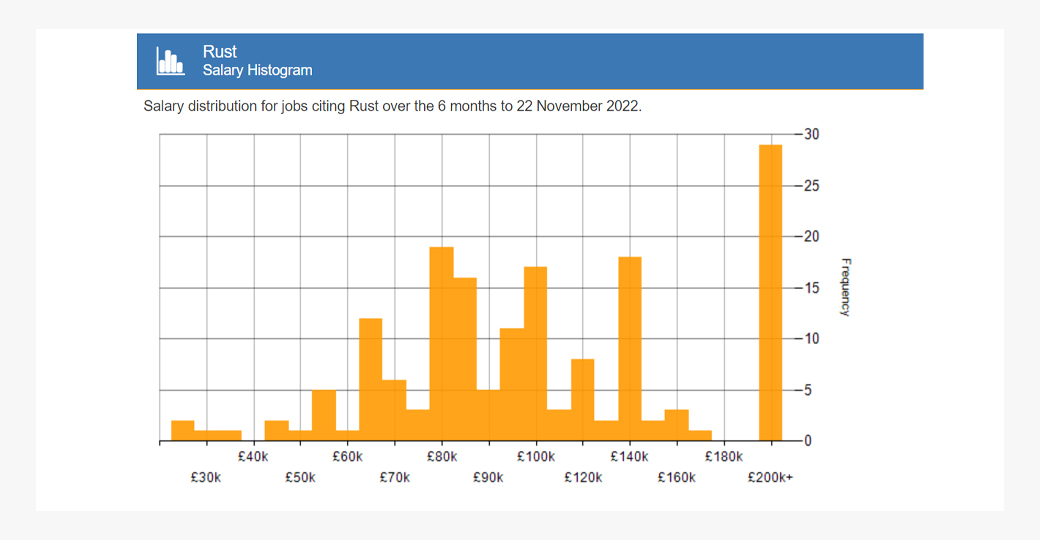
Our own information corroborates this. Despite everything, it’s a great time to be a Rust developer.
Lots of chatter in the dev world has focused on recent stability in the top 20 programming languages. Rust and other memory safe languages are mostly around a decade old now, with established bases, and well-developed resources on Gitbook and elsewhere.
But the salary growth Rust has demonstrated makes us think there’s something more here.
You’ve got continued interest in Rust from both ends – companies who are turning to Rust’s inherent scalability and memory-safe security, and developers who show strong appreciation for Rust’s features and continued interest in areas like web3 that use Rust heavily.
You need both elements to get the strong rise in salaries we’ve seen over the past few months.
And as long as that trend continues, developers will stay Rusty.
